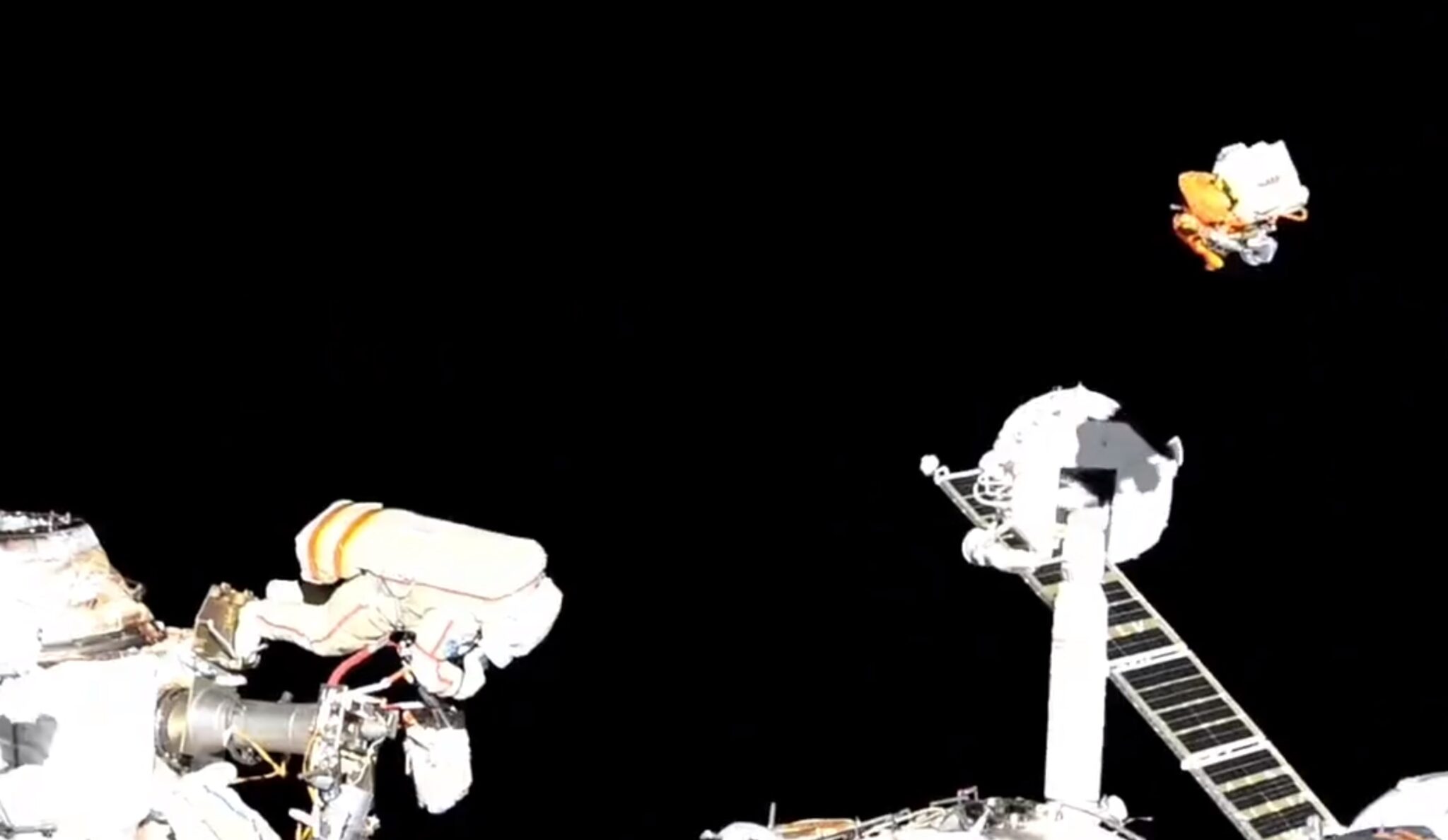Roscosmos cosmonauts Sergey Prokopyev and Dmitri Petelin went into outer space on the International Space Station (ISS) on May 4 to transfer the experimental gateway from the Rassvet module to the Nauka module. The video caught the moment when Prokopyev throws a 5-kilogram bag of garbage into outer space.

When thrown out, the mission control commentator compares the debris to a star that is slowly moving away from an orbital outpost about 400 km above the Earth. NASA reported that the disposed garbage did not pose a threat to satellites in orbit, since it was destined to burn up in the Earth’s atmosphere.
Spacewalker Sergey Prokopyev jettisons a 5-kilogram bundle of obsolete hardware into the vacuum of space to harmlessly burn up in the Earth’s atmosphere. Watch now… https://www.nasa.gov/live pic.twitter.com/mpnwm2woNO
— International Space Station (@Space_Station) May 4, 2023
Usually, garbage is not thrown into space just like that, because incorrect aiming and a large thrust force applied can send potentially dangerous cargo into the wrong orbit, after which the object will pose a threat to other objects in space, even to the ISS. In this case, the garbage will rotate at a speed of 44 thousand km/h and will have a frenzied kinetic energy. Therefore, usually the waste of the space outpost is stored in cargo spacecraft, for example, in Russian cargo Progress, after which they are sent to burn up in the Earth’s atmosphere.
NASA veteran Mike Engle once described the process of throwing garbage in space as “not just a walk in the trash”. An accurate calculation is important here, so as not to get into the station, and send the garbage back to Earth. Therefore, take a closer look – the cosmonaut does not just litter in space, but does it with an accurate sight in the opposite direction from the movement of the ISS at a speed of 5 cm/s. It is this speed and trajectory that are safe for disposal.
Earlier we reported on how scientists calculated the risk of death from falling space debris.
Follow us on Twitter to get the most interesting space news in time
https://twitter.com/ust_magazine

